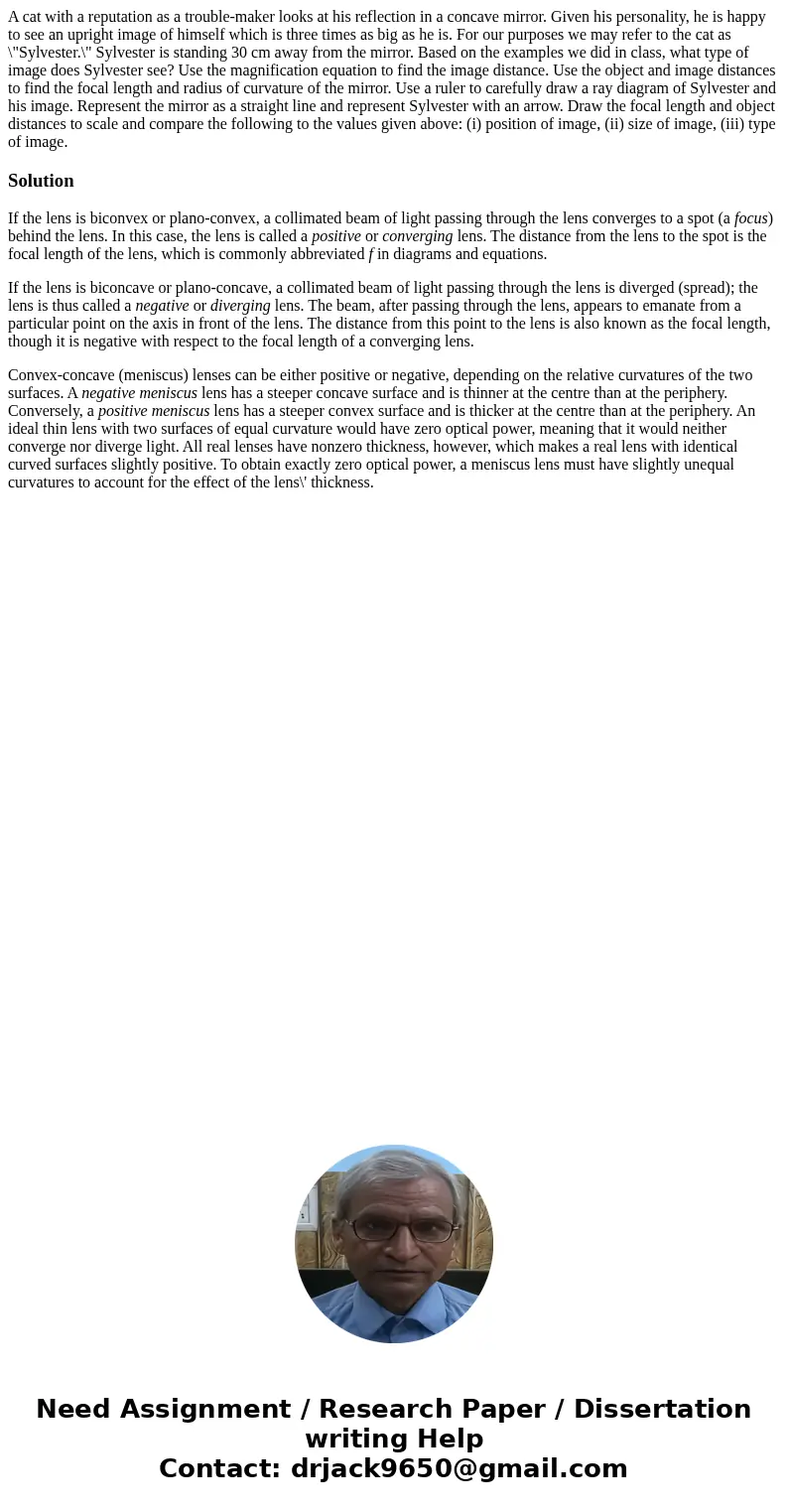A cat with a reputation as a troublemaker looks at his refle
Solution
If the lens is biconvex or plano-convex, a collimated beam of light passing through the lens converges to a spot (a focus) behind the lens. In this case, the lens is called a positive or converging lens. The distance from the lens to the spot is the focal length of the lens, which is commonly abbreviated f in diagrams and equations.
If the lens is biconcave or plano-concave, a collimated beam of light passing through the lens is diverged (spread); the lens is thus called a negative or diverging lens. The beam, after passing through the lens, appears to emanate from a particular point on the axis in front of the lens. The distance from this point to the lens is also known as the focal length, though it is negative with respect to the focal length of a converging lens.
Convex-concave (meniscus) lenses can be either positive or negative, depending on the relative curvatures of the two surfaces. A negative meniscus lens has a steeper concave surface and is thinner at the centre than at the periphery. Conversely, a positive meniscus lens has a steeper convex surface and is thicker at the centre than at the periphery. An ideal thin lens with two surfaces of equal curvature would have zero optical power, meaning that it would neither converge nor diverge light. All real lenses have nonzero thickness, however, which makes a real lens with identical curved surfaces slightly positive. To obtain exactly zero optical power, a meniscus lens must have slightly unequal curvatures to account for the effect of the lens\' thickness.

 Homework Sourse
Homework Sourse